Contemporary fashion rarely evokes a specific sense of time or place, but the one-of-a-kind garments of Project Alabama are an exception. From 2001-2006, Project Alabama earned rack space in boutiques from Tokyo to New York City and appeared in Vogue, Harper's Bazaar and many other publications. All this despite Project Alabama's location in Florence, Alabama, far from the fashion centers of New York or Paris.
The company got its start in 2001, when native Alabaman and former stylist Natalie Chanin needed something to wear to a party in New York City. Chanin deconstructed a t-shirt, cutting it apart and sewing it back together with visible stitches. The one-off shirt was a tremendous success, earning compliments and inquiries about where it was purchased. Based on the success of her spontaneous design, Chanin decided to make similar t-shirts for retail sale. At first, Chanin wanted to produce her t-shirts in New York, but quickly realized that she'd have more success producing garments with a handmade appearance if she hired sewers skilled in hand-sewing techniques. This led Chanin back to Alabama, where handwork, particularly quilting, was still an important part of local culture.
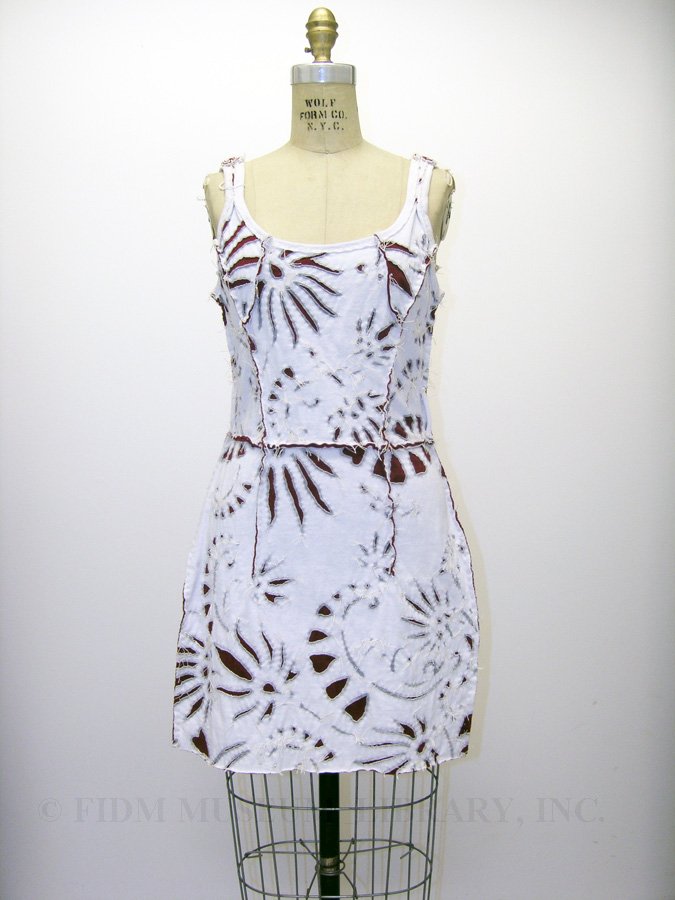 Tank dress with reverse applique
Tank dress with reverse applique
Project Alabama
c. 2003
Cotton jersey
Gift of Doris Raymond
2011.800.4
Each Project Alabama t-shirt or dress was handmade, start to finish. Local sewers, called stitchers in company parlance, worked from home to produce garments with a distinctly handmade appearance. The basis of each garment was cotton jersey, which was then hand-stitched into t-shirts, dresses, skirts or other garments. The unmistakable appearance of Project Alabama's garments resulted from multiple types of embellishment, including applique, embroidery, stencil. beading and visible stitches. Our tank dress features reverse applique, which Chanin has called her signature technique. Project Alabama's reverse applique begins with multiple layers of fabric; our dress features a red foundation layer and a white outer layer. The outer layer is stencilled, in this case with abstract floral imagery. The layers are then stitched together by following the outline of the stencil. In Project Alabama's work, these functional stitches are an integral part of the design. Once the outline of the design is stitched in place, the interior of the image is cut away. In the image below, notice the raw edges of the cut-away portions and the visible stitches and knots. You can also see that the seams are hand-stitched. Project Alabama garments rely entirely on hand-stitching, no machines allowed!
Because they were entirely handmade, Project Alabama garments were expensive. T-shirts were priced from $150-$300, while a dress could run as high as $3,000. These prices, however, allowed stitchers to earn a living wage in an area with little industry. At its peak, Project Alabama employed 200 stitchers.
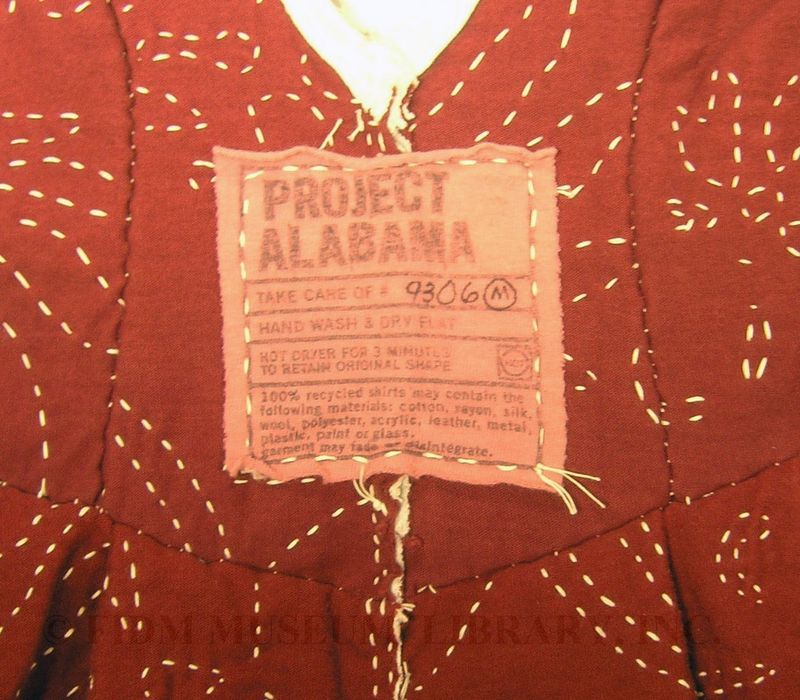 2011.800.4 Interior with label
2011.800.4 Interior with label
In an age of global fashion, the success of Project Alabama was something of an anomaly. The quirky hand-sewn dresses and t-shirts of Project Alabama proved that it is possible to create contemporary fashion rooted in local traditions. In promoting localized culture, Project Alabama was also an early purveyor of what is now called Slow Fashion, a movement that rejects the quick turnover of contemporary fashion and advocates quality over quantity. Slow Fashion is also concerned with reducing the ecological impact of fashion by re-making, mending, shopping second-hand and examining the supply chain for the production of new garments.
Natalie Chanin and Project Alabama parted ways in 2006. Though published accounts differ, it seems that the split may have occurred because Chanin's business partners wanted to move some production to India. Obviously, this move was at odds with the philosophical basis of Project Alabama. Garments bearing a Project Alabama label are still retailed at many stores, though a look at construction details will reveal a machine-made garment. After leaving Project Alabama, Chanin started Alabama Chanin. Similar in spirit and technique to Project Alabama, this company maintains Chanin's handmade aesthetic in the production of garments, quilts and even furniture. Chanin has also authored two books, Alabama Stitch Book and Alabama Studio Style, wherein she reveals her inspiration and techniques.

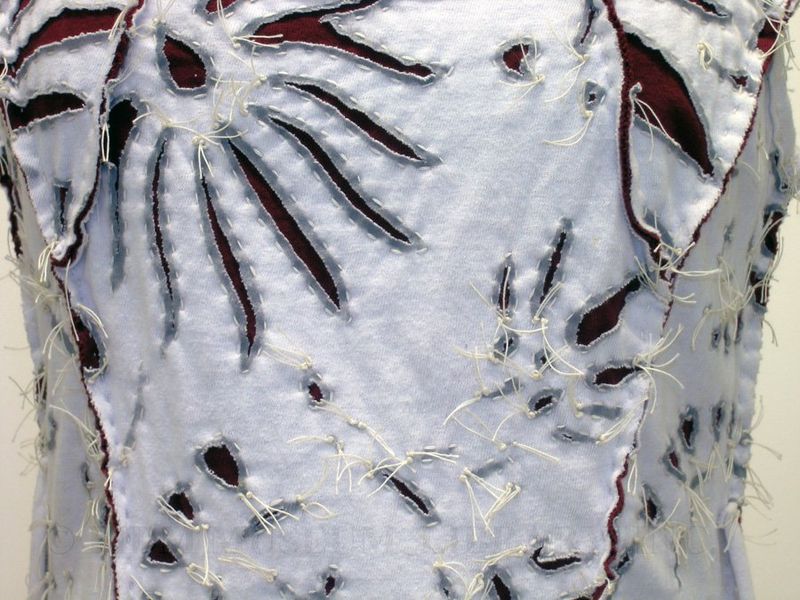
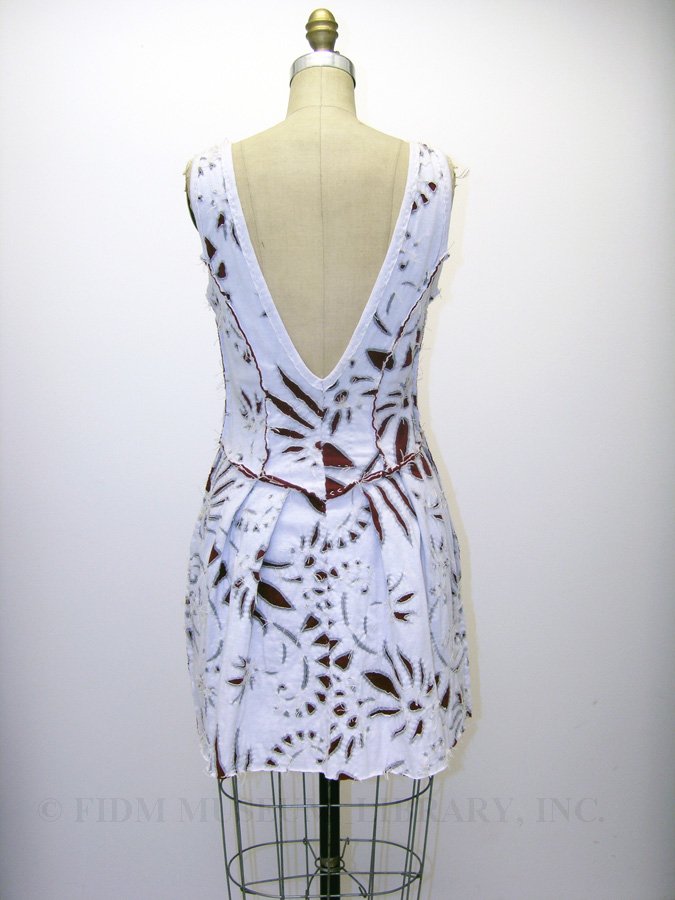
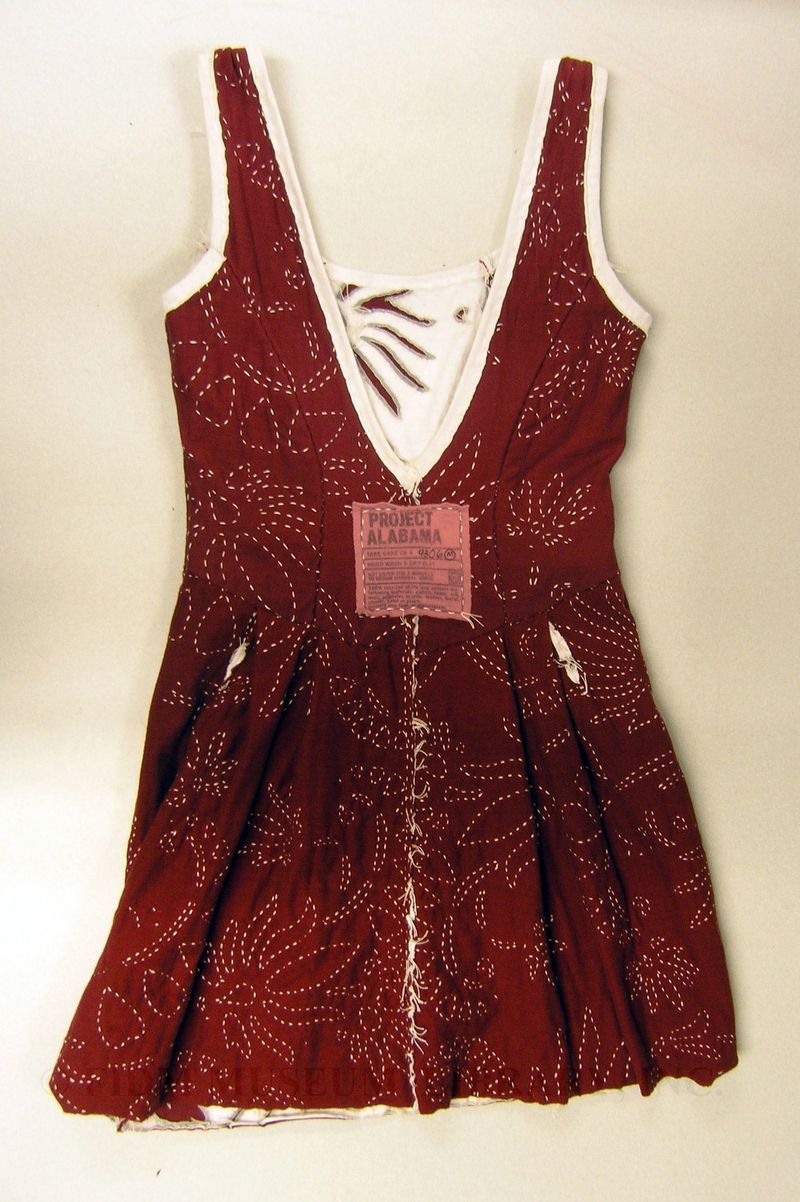

This selection is an interesting contrast to the embroidered 1880s smoking jacket of last week, especially when you consider the floral patterns on the “inside out” view as embroidery.
I didn’t think about the connections between these two objects until after I posted the Project Alabama dress, but you’re right. The lounge jacket and this contemporary dress were born from a shared goal of supporting/invigorating the handmade object. Though it’s interesting to see how different these tow objects are–the Project Alabama dress looks very handmade, while the lounge jacket looks like a machine production. The embroidery is so skillfull that it is hard to believe it was done by hand.
Je viens de réserver votre blog marqués blog.fidmmuseum.org sur Digg et Stumble Upon. J’aime lire vos commentaires.